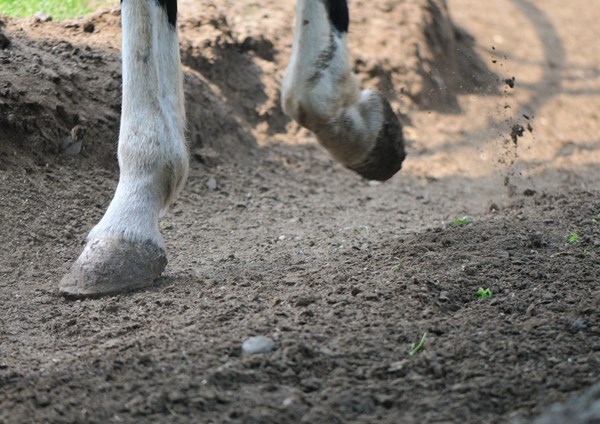 Credit: Thinkstock To maximize hoof health, the overall diet, environment, and genetics of the horse must be considered.
Credit: Thinkstock To maximize hoof health, the overall diet, environment, and genetics of the horse must be considered.Key nutrients in hoof supplements include the vitamin biotin, the amino acids methionine and lysine, and the minerals zinc and copper. Scientific studies* have clearly shown the benefits of biotin supplementation, and it is routinely advised to offer 15–20 mg of biotin/day for 6–9 months to improve hoof health.
“Although some studies support biotin supplementation, research on other ingredients commonly included in hoof supplements is needed. It is important that owners realize that dietary supplements are not a quick fix, and imbalances in the mineral content of a horse’s diet can wreck havoc on hooves,” warns Bryan Waldridge, DVM, MS, DACVIM, head veterinarian for Kentucky Equine Research.
Selenium is one mineral that must be carefully scrutinized. Too little selenium can result in signs of deficiency (white muscle disease), whereas too much can cause signs of toxicity, such as poor coats and white line disease—a (normally) non-painful separation of the hoof wall between the middle and inner layers. The problem is, the safety margin between too much and too little is much smaller for selenium than other minerals. As such, it is easy to run into problems balancing dietary selenium levels.
To maximize hoof health, the overall diet, environment, and genetics of the horse must be considered, including the following:
- Providing adequate energy but avoiding over-consumption of concentrates or lush pastures to cause laminitis (especially in easy keepers or those with insulin resistance or equine metabolic syndrome);
- Analyzing forage and scrutinizing all nutritional supplements offered to avoid over-supplementation and ensure a quality product is being offered;
- Providing routine farriery to catch hoof problems early and ensure deleterious mechanical stress—secondary to underrun heels or long toes, for example—are corrected quickly; and
- Offering daily exercise or turnout to promote blood flow to the feet.
*Reilly, J.D., D.F. Cottrell, R.J. Martin, et al. 1998. Effect of supplementary dietary biotin on hoof growth and hoof growth rate in ponies: A controlled trial. Equine Veterinary Journal Supplement 26:51–57.
Visit equinews.com/newsletters to subscribe to The Weekly Feed, KER’s award-winning equine nutrition newsletter.


